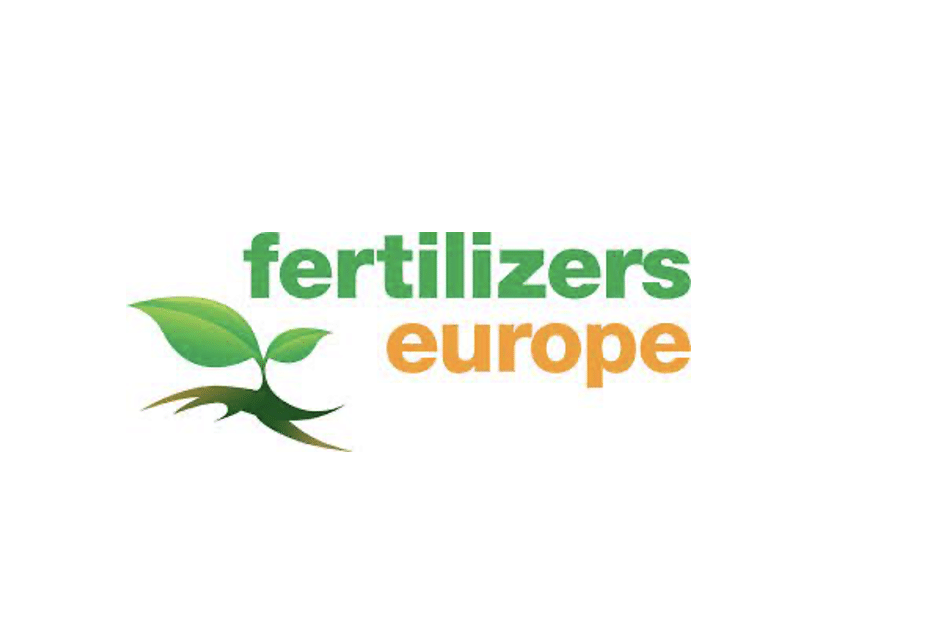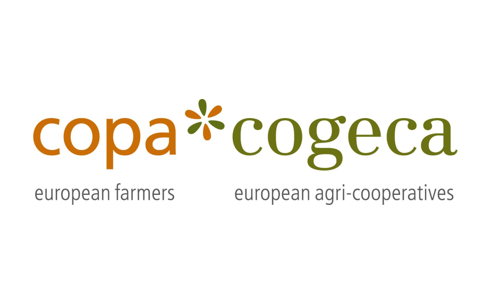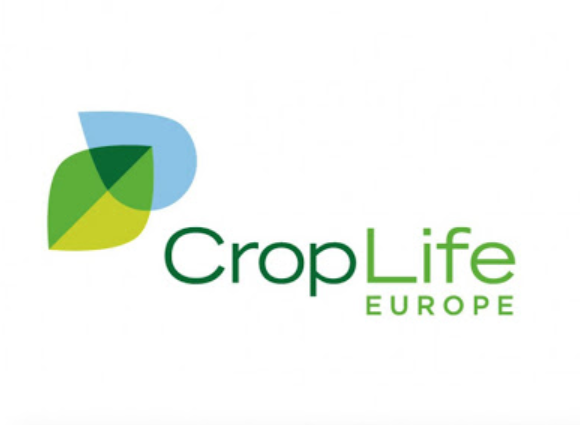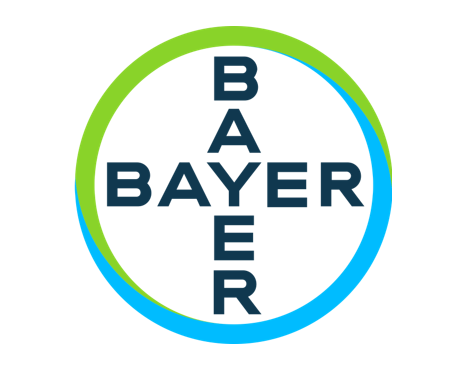Background
Fertilizers Europe (FE) is a trade group representing the fertilizer industry in the European Union.
According to its website, FE represents 16 corporate members, including German agrichemical giant BASF and Norwegian fertilizer company Yara, as well as seven national fertilizer associations. Yara and BASF are major producers of fossil fuel-based fertilizers, also called mineral fertilizers.1“Members,” Fertilizers Europe. Archived September 14, 2021. Archive URL:
https://archive.md/ZPrax
In a 2019 European Commission brief n on the use of fertilizers in the EU, Fertilizers Europe estimated that out of 179 million hectares of available agricultural land in the EU, 134 million, or 75 percent, are fertilized with mineral fertilizers. FE also stated in the brief that the EU produces 9 percent of the nitrogen fertilizer produced globally, 3 percent of the phosphate, and 8 percent of the potash or potassium-based fertilizer.2“Fertilisers in the EU, Prices, trade and use,” European Commission. Archived September 14, 2021. Archive URL: https://archive.md/gXedC
Nitrogen fertilizer is one of the most commonly used mineral fertilizers. Nitrogen fertilizer is usually produced by mixing nitrogen from the air with hydrogen produced by methane gas to create ammonia, which is then used to create nitric acid, the basis of nitrogen fertilizers – or urea. Fertilizers Europe has stated that “approximately 60 [percent] of the natural gas is used as raw material, with the remainder employed to power the synthesis process.”3“How fertilizers are made?,” Fertilizers Europe. Archived November 22, 2021. Archive URL: https://archive.ph/g0xY2
When applied, nitrogen fertilizers release nitrous oxide (N2O), a greenhouse gas that is almost 300 times more potent than CO2 over a 100 year period. N2O is released into the atmosphere by natural processes, such as the activity of microbes in the world’s soils and oceans. However, more than half of human-made N2O emissions come from agriculture, mainly the use of fertilizers.4Daisy Dunne. “Nitrogen fertilizer use could ‘threaten global climate goals’,” Carbon Brief, October 7, 2020. Archived November 25, 2021. Archive URL: https://archive.fo/L9DNY 5“Global Nitrous Oxide Budget,” Global Carbon Project, October 7, 2020. Archived November 7, 2021. Archive URL: https://archive.ph/9CCuT
Fertilizers Europe is a partner association of the European Chemical Industry Council (Cefic), an industry association representing chemical companies across Europe. Cefic’s members account for approximately 15 percent of world chemical production, according to its website.6“List of Partner Associations” Cefic November 2021. Archived .pdf at DeSmog. 7“About us,” European Chemical Industry Council. Archived May 25, 2021. Archive URL: https://archive.ph/B7NbG
Stance on Climate Change
Fertilizers Europe claims that the fertilizers industry has “demonstrated a strong commitment to improve environmental performance” by reducing its greenhouse gas emissions by more than 40 percent compared to 1990 levels.8“2030 Climate and Energy Policy Framework,” Fertilizers Europe. Archived November 22, 2021. Archive URL: https://archive.ph/9KNat
Fertilizers Europe has developed a carbon footprint calculator for the fertilizer industry. In a November 2019 article about the calculator, FE Senior Energy and Climate Advisor Michał Wendołowski wrote that carbon accounting is essential if the EU is going to meet its commitments under the Paris Agreement and become “climate neutral” by 2050. He also wrote that the calculator demonstrates that the European fertilizer industry “represents the least emission-intensive production” per ton of product and nutrient for all fertilizers analyzed, except for urea produced in Oceania. “The EU average carbon footprint is lower than in other regions mainly due to the higher average energy efficiency of EU plants and GHG abatement technology,” he added.9Michał Wendołowski. “Carbon footprinting in the fertilizer industry as an essential part of managing climate change,” Fertilizers Europe, November 12, 2019. Archived September 28, 2021. Archive URL: https://archive.ph/dSLNH
According to the “Policy Priorities” listed on its website, Fertilizers Europe focuses its activities on policies involving climate change & energy, industry competitiveness, industrial legislation, agriculture & environment and the circular economy.10“Priorities,” Fertilizers Europe. Archived November 22, 2021. Archive URL: https://archive.ph/Y4kDk
In a 2020 interview with The Parliament Magazine about how Europe’s Farm to Fork policy will affect the fertilizer sector, Fertilizers Europe Director General Jacob Hansen said: “We clearly cannot survive without mineral fertilizers and so need to make sure this resource is used better.” Speaking about the scope of the policy – which includes a target to reduce the use of fertilizers by 20% – he claimed that “the [EU’s] proposed level of ambition is clearly unrealistic in the given time frame.”11“In conversation with… Jacob Hansen,” The Parliament Magazine, Archived September 14, 2021. Archive URL: https://archive.md/rQs7M 12Martin Banks. “Commission’s unveiling of Farm to Fork Strategy receives mixed response,” The Parliament, May 20, 2020. Archived December 7, 2021. Archive URL: https://archive.fo/DmnGP
In its 2019/2020 annual overview, Fertilizers Europe stated that the targets proposed in Farm to Fork were “too ambitious given achievable farm practices.”132019/2020 Overview.” Fertilizers Europe. Archived December 7, 2021. Archived .pdf on file at DeSmog
Stance on Farm to Fork
Fertilizers Europe has been a vocal opponent of the Farm to Fork Strategy, the EU’s flagship initiative to reduce agriculture-related pollution and impacts on biodiversity. F2F includes major sustainability targets, such as a 50 percent reduction in the use of chemical pesticides and 20 percent reduction in fertilizer use by 2030, as well as an expanding organic farming to 25 percent of all agricultural land use by 2030.
In October 2021, Fertilizers Europe also released a joint statement with CropLife Europe and other agriculture trade groups entitled “Farm to Fork – it is time to listen to what the data says.” The joint statement criticized the EU Farm to Fork Strategy’s targets to reduce pesticide and fertilizer use, increase organic farming, and expand the area of “non-productive land.” The statement called these policy goals “non-data based political targets,” and argued that “we must build solution-oriented policies, based on the data we have to hand, with innovation as their cornerstone.”14“Farm to Fork – it is time to listen to what the data says,” CropLife Europe, Press Release. Oct 12, 2021. Archived July 19, 2022. Archived .pdf on file at DeSmog. Archive URL: http://archive.today/4R4P3
The joint statement was published on CropLife Europe’s website.15“Farm to Fork – it is time to listen to what the data says,” CropLife Europe, Press Release. Oct 12, 2021. Archived July 19, 2022. Archived .pdf on file at DeSmog. Archive URL: http://archive.today/4R4P3
The statement quoted several assessments of F2F’s impacts on the agriculture sector, including reports or studies from the U.S. Department of Agriculture (USDA), Wageningen University and Research, the University of Kiel, the Joint Research Centre of the EU (JRC), and HFFA Research. A number of these impact assessments were funded by agribusiness companies and trade groups, including two commissioned from Wageningen by COPA-COGECA and CropLife Europe.16Nina Holland and Rachel Tansey. “A loud lobby for a silent spring: the pesticide industry’s toxic lobbying tactics against Farm to Fork,” Corporate Europe Observatory, December 2021. Archived March 17, 2022. Archived .pdf on file at DeSmog.
According to the joint statement, there would be “significant impacts, trade-offs and blind spots” if the European food sector pursues the F2F targets, such as “outsourcing European agricultural production, including its emissions to third countries,” or that Europe “could become a net food importer.” Citing the USDA study, the statement claimed that the F2F strategy “could lead to food insecurity for 22 million people.” Citing the other impact assessments, the document stated that the F2F’s potential impacts on trade, farmer’s incomes, and consumer prices would be “socially unjust.”17(Press release). “Farm to Fork – it is time to listen to what the data says,” CropLife Europe, October 12, 2021. Archived July 19, 2022. Archived .pdf on file at DeSmog. Archive URL: http://archive.today/4R4P3
Fertilizers Europe has widely promoted an impact assessment conducted by Wageningen University and Research and funded and “guided” by pesticides trade body CropLife Europe. In January 2022, the group published a press release repeating warnings that Green Deal Targets would harm crop production. It warned against increased prices and job losses.18“Farm to Fork strategy risks undermining Europe’s food security while driving food prices up if not balanced with science-based solutions, Wageningen University and Research study concludes,” Fertilizers Europe, January 21, 2022. Archived December 20, 2022. Archived .pdf on file at DeSmog.
Fertilizers’ Europe’s Overview for 2021/2022 on its website includes tables outlining data from the impact assessment showing negative impacts predicted by the study on trade, production and prices and land use.19“Overview 2021/2022 – Agricultural and environmental policies,” Fertilizers Europe. Archived December 20, 2022. Archive URL: https://archive.ph/zzlKh
The studies cited in the joint statement and by Fertilizers Europe have been widely contested, with academics and NGOs highlighting their limitations.20Jeroen Candel. “Framing van het onderzoek, ook in de kop, is daarmee hoogst ongelukkig. Onderzoekers erkennen weliswaar dat voordelen klimaat en biodiversiteit niet zijn meegenomen, maar daar is die hele strategie nu juist voor bedoeld.,” Tweet by @JeroenCandel, October 12, 2021. Retrieved from Twitter November 9, 2022. Archived .png on file at DeSmog. 21“A loud lobby for a silent spring: The pesticide industry’s lobbying tactics against Farm to Fork.,” Corporate Europe Observatory, March 17, 2022. Archived July 26, 2022. Archive PDF: https://archive.ph/hpFb3
For example, in October 2021, the European Commission stated:22“Green Deal 2030 targets and agricultural production studies,” News Article, Directorate-General for Agriculture and Rural Development, European Commission, October 18, 2021. Archived July 22, 2022. Archive URL: http://archive.today/9MJmE
“They are not able to assess the full impacts of the two strategies and predict the future. For instance, the future consumer behavioural changes, the impact of research and innovation or technological uptake in the agricultural sector have not, or partially, been taken into account.”
According to the EU, the impact assessments cited by the AFCC and its partners did not fully account for potential benefits for the sector of the F2F targets, such as pollination from greater biodiversity, and “don’t look at the consequences when there is no action taken.”23“Factsheet: Green Deal targets for 2030 and agricultural production studies,” European Commission, February 2022. Archived August 4, 2022. Archived .pdf on file at DeSmog.
Fertilizers Europe has also joined other trade lobby groups in calling for further impact assessments of Farm to Fork and its measures. In May 2021, Fertilizers Europe signed an open letter with many other trade groups stating, “Without a comprehensive impact assessment, we will not be celebrating the one-year anniversary of the Farm to Fork strategy.” The statement requested: “to have a policy based on concrete data and scientific evidence that is in line with the better regulation principles, not on ideology and political stances”, implying that the current measures were not data-based.24“Joint Declaration on the anniversary of the Farm to Fork strategy”, Animalhealth Europe. Archived December 20, 2022. Archive URL: https://archive.ph/Z3kqv
Fertilizers Europe’s October 2021 joint statement also concluded with a call for a “comprehensive and cumulative impact assessment conducted by the European Commission [and] based on better data.”25(Press release). “Farm to Fork – it is time to listen to what the data says,” CropLife Europe, October 12, 2021. Archived July 19, 2022. Archived .pdf on file at DeSmog. Archive URL: http://archive.today/4R4P3
Corporate Europe Observatory has found that agribusiness lobby groups “flooded” the European Commission with similar calls for cumulative impact assessments. Politico reported that influencing the Commission to provide more impact assessments was “a key lobbying objective of Farm to Fork skeptics.”26Nina Holland and Rachel Tansey. “A loud lobby for a silent spring: the pesticide industry’s toxic lobbying tactics against Farm to Fork,” Corporate Europe Observatory, December 2021. Archived May 24, 2022. Archived .pdf on file at DeSmog. 27Eddy Wax. “MEPs vote on EU’s green food plan amid lobbying blitz”, POLITICO, October 17, 2021. Archived November 2, 2022. Archive URL: https://archive.ph/6sAeB
According to Corporate Europe Observatory, the impact assessments “tend to favour economic factors over social and environmental ones,” adding that these reports are “only delaying progress towards tackling the climate emergency.”28Vicky Cann. “Exploiting the Ukraine crisis for Big Business,” Corporate Europe Observatory, July 28, 2022. Archived October 25, 2022. Archive URL: https://archive.ph/dSLE8
Trade bodies have suggested that Farm to Fork is a threat to Europe’s international competitiveness. The October 2021 joint statement argued that if production decreased “EU imports of agricultural raw materials and ingredients are bound to increase significantly, thus making the EU dependent on imports to feed its population.” It also argued that Europe could become “a net importer of food.”29(Press Release). “Farm to Fork – it is time to listen to what the data says,” CropLife Europe, October 12, 2021. Archived July 19, 2022. Archived .pdf on file at DeSmog. Archive URL: http://archive.today/4R4P3
The May 2021 joint statement stated that Europe should have “the same level of ambition in the EU internal market vis-à-vis those international trade partners that don’t share the same ambitions.”30“Joint Declaration on the anniversary of the Farm to Fork strategy”, Animalhealth Europe. Archived December 20, 2022. Archive URL: https://archive.ph/Z3kqv
Research by IDDRI, INRAE, and French university Sciences Po has found that the EU is already a net-importer of calories. The 2021 study also found that if greener farming practices were combined with measures such as dietary changes and cutting food waste, Europe could become a net calorie exporter.31Michele Schiavo, Chantal Le Mouël, Xavier Poux, Pierre-Marie Aubert. “An agroecological Europe by 2050: What impact on land use, trade and global food security?,” IDDRI, July 2021. Archived December 20, 2022. Archived .pdf on file at DeSmog.
Fertilizers Europe has suggested that Farm to Fork targets should be achieved by “increasing nutrient efficiency” through measures like precision farming.
In January 2022, the Agri-Food Chain Coalition published a joint statement from its members, including Fertilizers Europe, arguing that innovation had to be the “cornerstone” of achieving F2F’s objectives. The letter “calls on European policymakers to enable innovation as a driver of its Farm to Fork targets.”
The statement outlined steps that the AFCC’s members were taking to address climate change. According to Fertilizers Europe, “the European fertilizer industry plays a vital role in ensuring a resilient European agriculture and in providing citizens with affordable and nutritious food. Increased nutrient use efficiency will be key to meet Europe’s ambitious goal of reducing nutrient losses while ensuring no deterioration of soil fertility.”32“Farm to Fork Strategy: how to reach the targets?,” Agri-Food Chain Coalition, January 27, 2022. Archived November 9, 2022. Archive URL: https://archive.ph/5PRDt
In its January 2022 press release on the Wageningen impact study, Fertilizers Europe Director General Jacob Hansen was quoted saying: “European farmers need a toolbox of solutions, including the Nitrogen Use Efficiency indicator, precision farming and digital tools as well as enhanced efficiency fertilizers, to strengthen sustainable farming practices.”33“Farm to Fork strategy risks undermining Europe’s food security while driving food prices up if not balanced with science-based solutions, Wageningen University and Research study concludes”, Fertilizers Europe, January 21, 2022. Archived December 20, 2022. Archived .pdf on file at DeSmog.
Fertilizers and Climate Change
Agriculture’s direct contribution to climate change is caused by the release of greenhouse gases into the atmosphere. The main byproducts of agricultural activity are methane (CH4) from livestock digestion processes, which is stored in manure, and nitrous oxide (N2O), which is released by organic and mineral nitrogen fertilizers.“34Tackling climate change,” European Commission, Archived December 3, 2021. Archive URL: https://archive.ph/vKMzc
Rising use of nitrogen-based fertilizers has driven up global emissions of NO2. When released into the atmosphere, N2O can damage the ozone layer. It traps 300 times more heat than CO2 and can remain in the atmosphere for decades.35Daisy Dunne.“Nitrogen fertilizer use could ‘threaten global climate goals’,” Carbon Brief, September 7, 2020. Archived November 25, 2021. Archive URL: https://archive.fo/L9DNY
Response to Fit for 55
Following the release of the Fit for 55 policy package, a group of legislative proposals designed to help the EU reduce net greenhouse gas emissions 55 percent by 2030, a press release from Fertilizers Europe stated that the package’s policies “fall way short” of what the industry needs by not recognizing the “need for competitiveness of European industry,” and said that the current version of Fit for 55 “increases carbon leakage risk rather than stimulating decarbonization.”36“EU’s “Fit for 55” to spur policy innovation for climate action,” Climate KIC, July 26, 2021. Archived November 5, 2021. Archive URL: https://archive.fo/FFtU8 37“Press Release: Fit for 55: Recognizing economic reality key to successful industry transformation towards climate neutrality,” Fertilizers Europe, Archived September 14, 2021. Archive URL: https://archive.md/wip/Ax1dS
In the same press release, Hansen said that the industry is in need of “capital investments to move from fossil to renewable-based production,” that Fit for 55 is “simply not good enough to boost the investment and transformation of our sector,” and that “the consequences for EU farmers and the agri-food value chain are also underestimated.”38“Press Release: Fit for 55: Recognizing economic reality key to successful industry transformation towards climate neutrality,” Fertilizers Europe, July 14, 2021. Archived September 14, 2021. Archive URL: https://archive.md/wip/Ax1dS
In March 2021, prior to the release of the Fit to 55 Strategy, Reuters reported that industry groups including Fertilizers Europe and Cefic had sent an email calling on MEPs to change their position on an upcoming vote on proposed changes to the EU’s carbon border levy plan.39Industry lobbies EU lawmakers to change carbon border levy plan,” Reuters. Archived September 14, 2021. Archive URL: https://archive.md/wip/Re0qt
As reported by Reuters, the particular issue under contention was a recommendation by an EU report – due to be voted on by MEPs – for changes to the EU’s carbon market which would get rid of “free” CO2 permits, meaning companies in certain industries could no longer emit certain allotted amounts of CO2 without paying a fee.40“Industry lobbies EU lawmakers to change carbon border levy plan,” Reuters. Archived September 14, 2021. Archive URL: https://archive.md/wip/Re0qt
EU Emission Trading Scheme and Cross Border Adjustment Mechanism
In 2020 and 2021, Fertilizers Europe promoted content on the online European news outlet EURACTIV concerning how the agricultural fertilizer sector could be a testing ground for the EU’s carbon border levy. The promoted article featured comments from a representative of FE member, Yara, who warned that the proposed carbon border levy could impact the affordability of food.41“A carbon border tax on fertilisers? Think twice, EU told,” EURACTIV. Archived September 14, 2021. Archive URL: https://archive.md/XvZon
In a 2020 press release, Fertilizers Europe expressed concern over the European Commission’s decision to exclude the fertilizer sector from the updated EU ETS State Aid Guidelines. According to FE, “the fertilizer industry will also rely on electrification and will need state support to meet the additional costs incurred in the industry decarbonisation transition.”42“Press Release: Revised EU ETS State Aid Guidelines to distort internal market and disincentivize investment,” Fertilizers Europe, Archived September 14, 2021. Archive URL: https://archive.md/wip/e5JSN
The EU ETS package includes a proposal to avoid “carbon leakage” by putting a carbon price on imports of certain goods (also known as the Cross Border Adjustment Mechanism, or CBAM), starting with cement, iron and steel, aluminium, electricity and nitrogen fertilizers. While a number of free allowances is distributed under the EU ETS to prevent carbon leakage, the Commission’s proposal for a revised ETS would reduce the number of free allowances for all sectors over time. For sectors affected by the CBAM, which is designed to be an alternative to the ETS, the free allowances will gradually be phased out from 2026.43“Carbon Border Adjustment Mechanism,” European Commission July 14, 2021. Archived December 1, 2021. Archive URL: https://archive.ph/wip/LtncO
Following the European Parliament’s CBAM resolution vote in March 2021, Hansen stated: “We are glad to see that the [parliament] explicitly recognised fertilizers among other energy-intensive sectors as most suited for the new mechanism.”44“Press Release: Parliament’s vote on carbon border adjustment mechanism reiterates the need for carbon leakage protection adequate to EU’s climate ambitions,” Fertilizers Europe, Archived September 14, 2021. Archive URL: https://archive.md/wip/cmrGf
Green Hydrogen and Green Ammonia
Conventionally, methane gas has been used in the first stage of nitrogen fertilizer production to produce hydrogen. The hydrogen is then combined with nitrogen to create ammonia, the key component of nitrogen-based fertilizers.
“Green” versions of nitrogen fertilizer would replace methane in two ways. Hydrogen production could be powered by power from renewable energy technologies, creating what is known as “green hydrogen.” Or, it could combine the use of methane with carbon capture and storage technologies to capture the emissions methane produces when burnt, creating what is known as “blue hydrogen.”45“Clean Ammonia,” Yara. Archived November 25, 2021. Archive URL: https://archive.fo/0EbC9 46“Decarbonising Food – Making the case for Green Fertilizers,” EURACTIV. Archived September 14, 2021. Archive URL: https://archive.md/wip/Ax1dS 47“The potential for CCS and CCU in Europe,” European Commission, Archived September 14, 2021 Archive URL: https://archive.md/wip/DCSlg
While blue and green hydrogen have been promoted as clean alternatives to traditional hydrogen production, some experts are skeptical about whether they are actually viable and climate-friendly alternatives. Green hydrogen makes up less than 1 percent of current hydrogen production, while recent scientific studies suggest that blue hydrogen may emit significantly more greenhouse gases than previously thought.48Justin Mikulka. “Green Hydrogen’s Rapidly Falling Costs Undermine the Gas Industry’s Argument for Blue Hydrogen,” DeSmog, September 24, 2021. 49Nathalie Thomas, David Sheppard, Neil Hume. “The race to scale up green hydrogen,” Financial Times, March 7, 2021. Archived November 12, 2021. Archive URL: https://archive.ph/rv9Az 50Tom Baxter. “Blue hydrogen – what is it and should it replace natural gas?,” The Conversation, August 13, 2021. Archived November 5, 2021. Archive URL: https://archive.ph/d2sFP
Research published in September 2021 predicts that green hydrogen will be comparable in cost, if not cheaper, than blue hydrogen by 2030. 51Justin Mikulka. “Green Hydrogen’s Rapidly Falling Costs Undermine the Gas Industry’s Argument for Blue Hydrogen,” DeSmog, September 24, 2021.
According to FE’s “Feeding Life 2030” strategy, in which the organization attempts to “find solutions that answer the question of how to continue feeding a growing population while doing so in a more energy and environmentally efficient way,” the nitrogen fertilizer industry is “key to unlocking clean energy potential” because it produces ammonia, which FE calls a “carbon-free energy carrier.”52“Feeding Life 2030,” Fertilizers Europe. Archived September 14, 2021. Archive URL: https://archive.md/wip/x9CAh
Fertilizers Europe Technical Director Antoine Hoxha, has called clean hydrogen a “major enabler for making carbon-free ammonia and fertilizers and low carbon food.”53“Clean Hydrogen as A Major Enabler for Making Carbon-Free Ammonia and Fertilizers” The European Files. Archived September 14, 2021. Archive URL: https://archive.md/wip/tFezp
Fertilizers Europe also advocates for the development of a green ammonia market. The concept of green ammonia production is based on running fertilizer plants entirely on renewable energy. Agriculture is responsible for 92 percent of volatile ammonia emissions (NH3) globally.54“Overview 2020/2021 – Green Ammonia: The Workhorse of the EU Hydrogen Economy,” Fertilizers Europe. Archived December 1, 2021. Archived .pdf on file at DeSmog. 55“Explainer: Renewable Energy,” Climate Portal. Archived December 1, 2021. Archive URL: https://archive.fo/7xRfX 56“Ammonia NH3 Emissions,” European Environment Agency. Archived December 1, 2021. Archive URL: https://archive.fo/A26DJ
According to Fertilizers Europe, while livestock and manure management and application causes the majority – 64 percent – of agriculture’s NH3 emissions, nitrogen fertilizers account for around 17 percent of ammonia emissions globally.57“Farming & Air Quality: Rising to the Challenge Together,” Fertilizers Europe, Archived September 14, 2021. Archive URL: https://archive.md/wip/VbteP
Ammonia emissions are associated with two major types of environmental problems: acidification and eutrophication. Acidification refers to dropping pH levels in soil, marine or freshwater habitats. , It is caused primarily by increased absorption of CO2 from the atmosphere, and can harm the physiology of organisms in those environments. . Eutrophication takes place when environments are disproportionately enriched with minerals and nutrients, causing the excessive growth of plants such as algae. Itis often caused by heavy levels of nitrogen-rich agricultural runoff. In Europe, about 70 percent of agricultural land in the EU uses excessive nutrients, harming water quality and biodiversity.58“A climate-dependent global model of ammonia emissions from chicken farming,” Jize Jiang , David S. Stevenson , Aimable Uwizeye , Giuseppe Tempio and Mark A. Sutton. School of Geosciences, University of Edinburgh. Archived September 14, 2021. Archive URL: https://archive.md/6Acww 59“EU Missions – Soil Deal for Europe,” Publication Office of the European Union. Archived December 3, 2021. Archived .pdf on file at DeSmog
According to Fertilizers Europe, precision farming can reduce losses of fertilizers to the air, and therefore diminish the release of ammonia and improve air quality. FE expects that the growing development and deployment of new technologies will reduce ammonia emissions linked to agriculture by 10 percent by 2030.60“Farming & Air Quality,” Fertilizers Europe, Archived September 14, 2021. Archive URL: https://archive.md/wip/VbteP 61“Farming & Air Quality: Rising to the Challenge Together,” Fertilizers Europe, Archived September 14, 2021. Archive URL: https://archive.md/wip/VbteP
Lobbying
According to the EU Transparency Register, Fertilizers Europe spent between €700,000 – €799,999 on lobbying in 2020.62“Transparency Register,” European Commission, Archived on September 14, 2021, Archive URL: https://archive.md/wip/tLWTW
Affiliations
Fertilizers Europe is a “partner association” of the European Chemical Industry Council (Cefic), which represents fertilizers companies including BASF and Yara, as well as oil and gas companies that provide the feedstock for the fertilizer industry.63“List of Partner Associations,” European Chemical Industry Council. Archived November 30, 2021. Archive URL: https://archive.ph/IiZLy
In March 2021, Reuters reported that industry groups including Fertilizers Europe and Cefic had sent an email calling on MEPs to change their position on an upcoming vote on proposed changes to the EU’s carbon border levy plan.64“Industry lobbies EU lawmakers to change carbon border levy plan,” Reuters. Archived September 14, 2021. Archive URL: https://archive.md/wip/Re0qt
Fertilizers Europe participates in the European Clean Hydrogen Alliance, an initiative of the European Commission set up in July 2020. The alliance supports “the large-scale deployment of clean hydrogen technologies by 2030 by bringing together renewable and low-carbon hydrogen production, demand in industry, mobility and other sectors,” and “aims to promote investments and stimulate the roll-out of clean hydrogen production and use.”65“European Clean Hydrogen Alliance Members,” European Commission. Archived .pdf on file at DeSmog. 66“European Clean Hydrogen Alliance,” European Commission. Archived November 5, 2021. Archive URL: https://archive.ph/OKqQV
Resources
- 1
- 2“Fertilisers in the EU, Prices, trade and use,” European Commission. Archived September 14, 2021. Archive URL: https://archive.md/gXedC
- 3“How fertilizers are made?,” Fertilizers Europe. Archived November 22, 2021. Archive URL: https://archive.ph/g0xY2
- 4Daisy Dunne. “Nitrogen fertilizer use could ‘threaten global climate goals’,” Carbon Brief, October 7, 2020. Archived November 25, 2021. Archive URL: https://archive.fo/L9DNY
- 5“Global Nitrous Oxide Budget,” Global Carbon Project, October 7, 2020. Archived November 7, 2021. Archive URL: https://archive.ph/9CCuT
- 6“List of Partner Associations” Cefic November 2021. Archived .pdf at DeSmog.
- 7“About us,” European Chemical Industry Council. Archived May 25, 2021. Archive URL: https://archive.ph/B7NbG
- 8“2030 Climate and Energy Policy Framework,” Fertilizers Europe. Archived November 22, 2021. Archive URL: https://archive.ph/9KNat
- 9Michał Wendołowski. “Carbon footprinting in the fertilizer industry as an essential part of managing climate change,” Fertilizers Europe, November 12, 2019. Archived September 28, 2021. Archive URL: https://archive.ph/dSLNH
- 10
- 11“In conversation with… Jacob Hansen,” The Parliament Magazine, Archived September 14, 2021. Archive URL: https://archive.md/rQs7M
- 12Martin Banks. “Commission’s unveiling of Farm to Fork Strategy receives mixed response,” The Parliament, May 20, 2020. Archived December 7, 2021. Archive URL: https://archive.fo/DmnGP
- 132019/2020 Overview.” Fertilizers Europe. Archived December 7, 2021. Archived .pdf on file at DeSmog
- 14“Farm to Fork – it is time to listen to what the data says,” CropLife Europe, Press Release. Oct 12, 2021. Archived July 19, 2022. Archived .pdf on file at DeSmog. Archive URL: http://archive.today/4R4P3
- 15“Farm to Fork – it is time to listen to what the data says,” CropLife Europe, Press Release. Oct 12, 2021. Archived July 19, 2022. Archived .pdf on file at DeSmog. Archive URL: http://archive.today/4R4P3
- 16Nina Holland and Rachel Tansey. “A loud lobby for a silent spring: the pesticide industry’s toxic lobbying tactics against Farm to Fork,” Corporate Europe Observatory, December 2021. Archived March 17, 2022. Archived .pdf on file at DeSmog.
- 17(Press release). “Farm to Fork – it is time to listen to what the data says,” CropLife Europe, October 12, 2021. Archived July 19, 2022. Archived .pdf on file at DeSmog. Archive URL: http://archive.today/4R4P3
- 18“Farm to Fork strategy risks undermining Europe’s food security while driving food prices up if not balanced with science-based solutions, Wageningen University and Research study concludes,” Fertilizers Europe, January 21, 2022. Archived December 20, 2022. Archived .pdf on file at DeSmog.
- 19“Overview 2021/2022 – Agricultural and environmental policies,” Fertilizers Europe. Archived December 20, 2022. Archive URL: https://archive.ph/zzlKh
- 20Jeroen Candel. “Framing van het onderzoek, ook in de kop, is daarmee hoogst ongelukkig. Onderzoekers erkennen weliswaar dat voordelen klimaat en biodiversiteit niet zijn meegenomen, maar daar is die hele strategie nu juist voor bedoeld.,” Tweet by @JeroenCandel, October 12, 2021. Retrieved from Twitter November 9, 2022. Archived .png on file at DeSmog.
- 21“A loud lobby for a silent spring: The pesticide industry’s lobbying tactics against Farm to Fork.,” Corporate Europe Observatory, March 17, 2022. Archived July 26, 2022. Archive PDF: https://archive.ph/hpFb3
- 22“Green Deal 2030 targets and agricultural production studies,” News Article, Directorate-General for Agriculture and Rural Development, European Commission, October 18, 2021. Archived July 22, 2022. Archive URL: http://archive.today/9MJmE
- 23“Factsheet: Green Deal targets for 2030 and agricultural production studies,” European Commission, February 2022. Archived August 4, 2022. Archived .pdf on file at DeSmog.
- 24“Joint Declaration on the anniversary of the Farm to Fork strategy”, Animalhealth Europe. Archived December 20, 2022. Archive URL: https://archive.ph/Z3kqv
- 25(Press release). “Farm to Fork – it is time to listen to what the data says,” CropLife Europe, October 12, 2021. Archived July 19, 2022. Archived .pdf on file at DeSmog. Archive URL: http://archive.today/4R4P3
- 26Nina Holland and Rachel Tansey. “A loud lobby for a silent spring: the pesticide industry’s toxic lobbying tactics against Farm to Fork,” Corporate Europe Observatory, December 2021. Archived May 24, 2022. Archived .pdf on file at DeSmog.
- 27Eddy Wax. “MEPs vote on EU’s green food plan amid lobbying blitz”, POLITICO, October 17, 2021. Archived November 2, 2022. Archive URL: https://archive.ph/6sAeB
- 28Vicky Cann. “Exploiting the Ukraine crisis for Big Business,” Corporate Europe Observatory, July 28, 2022. Archived October 25, 2022. Archive URL: https://archive.ph/dSLE8
- 29(Press Release). “Farm to Fork – it is time to listen to what the data says,” CropLife Europe, October 12, 2021. Archived July 19, 2022. Archived .pdf on file at DeSmog. Archive URL: http://archive.today/4R4P3
- 30“Joint Declaration on the anniversary of the Farm to Fork strategy”, Animalhealth Europe. Archived December 20, 2022. Archive URL: https://archive.ph/Z3kqv
- 31Michele Schiavo, Chantal Le Mouël, Xavier Poux, Pierre-Marie Aubert. “An agroecological Europe by 2050: What impact on land use, trade and global food security?,” IDDRI, July 2021. Archived December 20, 2022. Archived .pdf on file at DeSmog.
- 32“Farm to Fork Strategy: how to reach the targets?,” Agri-Food Chain Coalition, January 27, 2022. Archived November 9, 2022. Archive URL: https://archive.ph/5PRDt
- 33“Farm to Fork strategy risks undermining Europe’s food security while driving food prices up if not balanced with science-based solutions, Wageningen University and Research study concludes”, Fertilizers Europe, January 21, 2022. Archived December 20, 2022. Archived .pdf on file at DeSmog.
- 34Tackling climate change,” European Commission, Archived December 3, 2021. Archive URL: https://archive.ph/vKMzc
- 35Daisy Dunne.“Nitrogen fertilizer use could ‘threaten global climate goals’,” Carbon Brief, September 7, 2020. Archived November 25, 2021. Archive URL: https://archive.fo/L9DNY
- 36“EU’s “Fit for 55” to spur policy innovation for climate action,” Climate KIC, July 26, 2021. Archived November 5, 2021. Archive URL: https://archive.fo/FFtU8
- 37
- 38“Press Release: Fit for 55: Recognizing economic reality key to successful industry transformation towards climate neutrality,” Fertilizers Europe, July 14, 2021. Archived September 14, 2021. Archive URL: https://archive.md/wip/Ax1dS
- 39Industry lobbies EU lawmakers to change carbon border levy plan,” Reuters. Archived September 14, 2021. Archive URL: https://archive.md/wip/Re0qt
- 40“Industry lobbies EU lawmakers to change carbon border levy plan,” Reuters. Archived September 14, 2021. Archive URL: https://archive.md/wip/Re0qt
- 41“A carbon border tax on fertilisers? Think twice, EU told,” EURACTIV. Archived September 14, 2021. Archive URL: https://archive.md/XvZon
- 42
- 43“Carbon Border Adjustment Mechanism,” European Commission July 14, 2021. Archived December 1, 2021. Archive URL: https://archive.ph/wip/LtncO
- 44
- 45
- 46“Decarbonising Food – Making the case for Green Fertilizers,” EURACTIV. Archived September 14, 2021. Archive URL: https://archive.md/wip/Ax1dS
- 47“The potential for CCS and CCU in Europe,” European Commission, Archived September 14, 2021 Archive URL: https://archive.md/wip/DCSlg
- 48Justin Mikulka. “Green Hydrogen’s Rapidly Falling Costs Undermine the Gas Industry’s Argument for Blue Hydrogen,” DeSmog, September 24, 2021.
- 49Nathalie Thomas, David Sheppard, Neil Hume. “The race to scale up green hydrogen,” Financial Times, March 7, 2021. Archived November 12, 2021. Archive URL: https://archive.ph/rv9Az
- 50Tom Baxter. “Blue hydrogen – what is it and should it replace natural gas?,” The Conversation, August 13, 2021. Archived November 5, 2021. Archive URL: https://archive.ph/d2sFP
- 51Justin Mikulka. “Green Hydrogen’s Rapidly Falling Costs Undermine the Gas Industry’s Argument for Blue Hydrogen,” DeSmog, September 24, 2021.
- 52“Feeding Life 2030,” Fertilizers Europe. Archived September 14, 2021. Archive URL: https://archive.md/wip/x9CAh
- 53“Clean Hydrogen as A Major Enabler for Making Carbon-Free Ammonia and Fertilizers” The European Files. Archived September 14, 2021. Archive URL: https://archive.md/wip/tFezp
- 54“Overview 2020/2021 – Green Ammonia: The Workhorse of the EU Hydrogen Economy,” Fertilizers Europe. Archived December 1, 2021. Archived .pdf on file at DeSmog.
- 55“Explainer: Renewable Energy,” Climate Portal. Archived December 1, 2021. Archive URL: https://archive.fo/7xRfX
- 56“Ammonia NH3 Emissions,” European Environment Agency. Archived December 1, 2021. Archive URL: https://archive.fo/A26DJ
- 57“Farming & Air Quality: Rising to the Challenge Together,” Fertilizers Europe, Archived September 14, 2021. Archive URL: https://archive.md/wip/VbteP
- 58“A climate-dependent global model of ammonia emissions from chicken farming,” Jize Jiang , David S. Stevenson , Aimable Uwizeye , Giuseppe Tempio and Mark A. Sutton. School of Geosciences, University of Edinburgh. Archived September 14, 2021. Archive URL: https://archive.md/6Acww
- 59“EU Missions – Soil Deal for Europe,” Publication Office of the European Union. Archived December 3, 2021. Archived .pdf on file at DeSmog
- 60“Farming & Air Quality,” Fertilizers Europe, Archived September 14, 2021. Archive URL: https://archive.md/wip/VbteP
- 61“Farming & Air Quality: Rising to the Challenge Together,” Fertilizers Europe, Archived September 14, 2021. Archive URL: https://archive.md/wip/VbteP
- 62“Transparency Register,” European Commission, Archived on September 14, 2021, Archive URL: https://archive.md/wip/tLWTW
- 63“List of Partner Associations,” European Chemical Industry Council. Archived November 30, 2021. Archive URL: https://archive.ph/IiZLy
- 64“Industry lobbies EU lawmakers to change carbon border levy plan,” Reuters. Archived September 14, 2021. Archive URL: https://archive.md/wip/Re0qt
- 65“European Clean Hydrogen Alliance Members,” European Commission. Archived .pdf on file at DeSmog.
- 66“European Clean Hydrogen Alliance,” European Commission. Archived November 5, 2021. Archive URL: https://archive.ph/OKqQV






